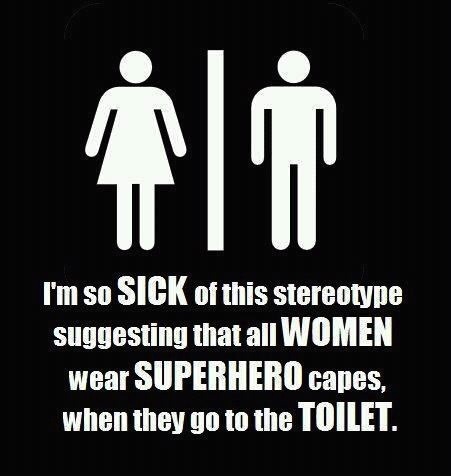This is a hefty post filled to the brim with hyperlinks! Don't let it overwhelm you; instead, let it take you to new worlds of ideas! For your ready-reference, all semester I have been collecting some useful websites for all things related to children's multicultural literature.
(This list is updated often -- whenever I come across another fun link.)
Awards
Must-Reads
Lesson Plans
Book Review and Storytime Sites
Helpful Organizations/Publishers
Author Resources
(This list is updated often -- whenever I come across another fun link.)
Awards
- Pura Belpre http://www.reforma.org/content.asp?pl=7&sl=43&contentid=43 and http://www.ala.org/alsc/awardsgrants/bookmedia/belpremedal/belpreabout. Pura Belpre was the first Puerto Rican librarian in the New York Public Library system. She encouraged the Latino community to interact with the library and helped the library create programs based on its diverse population. Helpful for learning about the award and its background.
- Estela and Raul Mora Award http://www.reforma.org/content.asp?pl=7&sl=44&contentid=44. The Estela and Raul Mora Award is presented annually to the most exemplary culminating celebrations of El día de los niños/El día de los libros (Children’s Day/Book Day). Helpful for understanding the award as well as applying for it.
- Book and Media Awards http://www.booklistonline.com/GeneralInfo.aspx?id=46&gclid=CKKi1_WRsrUCFa1AMgodIXEAEA&AspxAutoDetectCookieSupport=1 This is a great resource for finding out about numerous awards for children's literature. It provides up-to-date listings.
- Awards for Multicultural Youth Literature http://www.pages.drexel.edu/~dea22/multaward.htm This simple resource provides a list of awards as well as descriptions of what the award is. Don't let its simplicity fool you, it's links are rather helpful.
- Multicultural Children's/YA Book Awards http://libguides.tcnj.edu/content.php?pid=218372&sid=1814654 Just like the above bullet point, this great resource provides a large list of awards. Unlike the above bullet point, its descriptions of the awards are a little more in depth.
Must-Reads
- CCBC's "50 Multicultural Books Every Child Should Know" http://www.education.wisc.edu/ccbc/books/detailListBooks.asp?idBookLists=42
- Reforma's Bilingual Children's books http://reforma.membershipsoftware.org/content.asp?pl=59&sl=9&contentid=87
- Booklist http://www.rif.org/us/literacy-resources/booklists/multicultural-books.htm
- Multicultural Literature Resources http://www.lib.unca.edu/library/rr/multcultlit.html
- Multicultural Reading http://www.cynthialeitichsmith.com/lit_resources/diversity/multicultural/multi_biblio.html
- Multicultural Literature http://www.scholastic.com/browse/article.jsp?id=2000
- Connected Youth has some amazing book lists for everything! Check here to find booklists from African-American Teen lit to Arthurian Legends retold. http://www.connectedyouth.org/books/
Lesson Plans
- Lesson Plans with a Multicultural Focus http://www.library.csustan.edu/lboyer/multicultural/lesson2.htm This resource provides links to lesson plans for teaching multicultural literature. You will also find other non-multicultural literature related topics as well.
- ALA http://www.alastore.ala.org/library-activities.aspx?gclid=CM2e_6-PsrUCFYpDMgod5hEA4w As usual, the ALA shines with wonderful ideas. This resource provides ideas for crafts, storytime, gaming, puppets, young adult lit, and more.
- OJR Library Resources http://lib.ojrsd.com/content.php?pid=198797&sid=2569778 I've included this research guide as a means to finding information on multicultural literature in one condensed space. This research guide contains basically every catagory (awards, lesson plans, book reviews, etc.) that I've listed here. You can use it as a quick-guide to multicultural literature.
- Multicultural Connection Lesson Plans http://www.whitebear.k12.mn.us/pdfs/multicultural_lessonplans.pdf This is a lengthy guide to specific books and how they can be used in discussion. It is quite helpful in that it designates a "topic" for each book, so you may find alike books if needed to discuss with children.
- How to Choose the Best Multicultural Books http://www.scholastic.com/teachers/article/how-choose-best-multicultural-books Scholastic is a terrific resource for all things children. This article details ways of picking out the "best" multicultural children's books and gives you examples.
- http://www.emilylibrary.com/3rd-grade-multicultural-booksdigital-storytelling.html I included this as it pertains to lessons with digital storytelling, a fun way to create book trailers or tell stories that will hold your audience's attention.
Book Review and Storytime Sites
- Booklist Online http://www.booklistonline.com/home
- Multicultural Children's Book Review http://www.multiculturalfamilia.com/2011/07/01/multicultural-childrens-book-review-how-we-are-smart/
- Multicultural Children's Book Review (Cleveland State) http://app-b.ulib.csuohio.edu/scripts/children/genre1.asp
- http://www.sweetonbooks.com/all-titles/930-elephant-and-piggie-lets-go-for-a-drive.html
- Abbythelibrarian.com
- ALSC blog
- Geo Librarian http://geolibrarian.blogspot.com/2012/03/my-top-childrens-nonfiction-chapter.html (great non-fiction chapter book post)
- http://www.perrypubliclibrary.org/storytime_themes (Storytime themes, including songs, books, flannels, etc.)
- http://storytimekatie.com/tag/winter-2011/ (Storytime Katie) for storytime ideas.
- http://www.surlalunefairytales.com/storytime/snow/ Storytime ideas.
- http://www.bayviews.org/storytime/ststorytimeplanningwebsites.html Gives a list just like this one!
Helpful Organizations/Publishers
- Reforma http://www.reforma.org/
- YALSA http://www.ala.org/yalsa/
- ALSC http://www.ala.org/alsc/
- CCBC http://www.education.wisc.edu/ccbc/
- NEA http://www.nea.org/
- Scholastic http://www.scholastic.com/home/
- Penguin http://www.penguin.com/
- HarperCollins Children's http://www.harpercollinschildrens.com/
- Random House http://www.randomhouse.com/
Author Resources
- Children's Literature http://www.childrenslit.com/
- 10 Great Author's in Children's Literature http://simplemom.net/10-great-authors-in-childrens-literature/
- Children's Books and Authors http://www.readingrockets.org/books/
- Sampler of Latino Children's and YA Authors and Illustrators http://www.patmora.com/sampler.htm This site is terrific for learning about Hispanic authors and illustrators. It provides links to the author's sites.
- Yahoo! Directory http://dir.yahoo.com/arts/humanities/literature/authors/children_s/

